Content
What breeders and sellers of seedlings will not come up with to attract a buyer! One of the latest novelties on the market is the raspberry tree; the Skazka variety has gained particular popularity. The beauty of this plant is truly fabulous: a tall bush with powerful woody shoots, spectacular and fragrant flowering and large, very tasty berries. Variety raspberries The tale has many advantages, this variety has its own characteristics, some disadvantages.
Description of the Tale raspberry variety, photos of bushes and berries, as well as reviews of this variety can be found in this article. The rules for growing and caring for tree raspberries are also described here.
Characteristics of Raspberry Fairy Tale
Raspberry Skazka became the second standard variety bred on the basis of the Turus variety. The trunk is called the trunk of a tree, from the base to the very top. Cultivation of raspberries on a stem began to be used only a few decades ago. The gardener should understand that the expression "crimson tree" is somewhat exaggerated, in fact, it is just a powerful bush with thick, wood-covered shoots and a decent height.
Standard raspberry Tale has the following characteristics:
- medium ripening - berries ripen already in the middle of summer;
- a powerful bush up to 2-2.5 meters high, which does not need to be tied up due to its thick stems;
- this raspberry is not remontant, but its fruiting period is extended - you can pick fresh berries until autumn;
- the fruits are very beautiful, large, shiny, conical - the mass of the berry can reach 15 grams;
- the taste of raspberries is excellent, the aroma is strongly pronounced, the sugar content is high;
- the fruits are transportable, do not crumble from the branches, remain elastic and beautiful for a long time;
- shoots are powerful, thick, not thinning upward, spreading;
- at least four lateral shoots appear on each stem - they create fruit branches;
- the leaves of the Fairy Tale are bright green, glossy, carved;
- the yield is very high, it can reach 10 kg from each bush;
- the variety is unpretentious, resistant to diseases and pests;
- the tale is able to withstand frosts down to -23 degrees, is well adapted to prolonged drought;
- raspberries need pruning, standard bushes must be formed.
Description of raspberry Skazka would be incomplete, if not to mention some of the shortcomings of this variety:
- The tale is not suitable for cultivation in the northernmost regions. Thick woody stems cannot be bent to the ground in order to shelter for the winter.
- The high height of the bush makes it difficult to pick berries from the very top.
- The yield of raspberries Tale depends very much on the growing conditions and the frequency of feeding.
- The standard bush constantly needs to be corrected, shaped, carrying out seasonal pruning in both spring and autumn.
All the shortcomings of the Skazka raspberry variety are instantly forgotten at just one glance at this picturesque bush. And the taste of the berries is so good that you can try and put more effort into growing, fertilize and water these raspberries more often in your own garden.
Planting and leaving
There is no particular difference in the cultivation of standard raspberries. There is no Tale: this variety needs the same agrotechnical techniques as any other garden or remontant raspberry. For a good harvest, Skazka raspberries need loose soil, regular watering, generous feeding, a lot of sun and warmth.
How to plant a Fairy Tale in your garden
Raspberry, which belongs to the standard variety, requires a lot of space and light - this is the first rule of planting such a plant. That is why for this raspberry, they choose a sunny, wind-protected place, better located on a hill.
The soil under the Skazka must be loose and nutritious, therefore, if it does not meet these requirements, the composition of the soil will have to be improved. Dig a hole for planting a seedling, fill it with nutritious chernozem or add a bucket of humus, coarse sand, wood ash, peat.
Good air permeability of the soil is very important for standard raspberries, since the upper roots of such a plant must absorb oxygen from the air. Therefore, the Fairy Tale is not planted in the lowlands, where water will stagnate in spring or after a heavy downpour. In addition, the soil around the bush is regularly weeded, loosened and removed. weeds.
This raspberry is propagated by cuttings. They need to be planted immediately after purchase. If there are several bushes, a decent spacing is observed between them - 100 cm in a row and at least 180 cm between adjacent rows.
To plant a Fairy tale seedling, they dig a hole or trench, the depth of which will be about 40 cm. Humus or compost is poured at the bottom of the garden bed, the upper layers of the soil are mixed with ash, peat, sand.
After planting, the raspberries need to be watered regularly until the roots take root and new shoots appear on the stem.
You need to take care of standard raspberries constantly, almost all year round. This care consists of the following:
- After the seedlings are rooted, watering is done less frequently, as the land dries up.
- When new leaves begin to appear, the soil around the Fairy Tale is mulched with peat, sawdust or leaves in order to better retain moisture.
- When the bush is blooming and the berries ripen on it, the raspberries are especially in need of watering. During this period, the Fairy Tale is watered more often and more abundantly.
- You need to feed stock raspberries from the beginning of flowering until autumn pruning. For feeding, it is better to use liquid organic matter or mineral complexes dissolved in water.
- After harvesting, it is necessary to prune the bush in the fall. At this stage, two-year-old shoots are cut at the root, form a bush, leaving no more than seven young stems. It is necessary to distribute new shoots of replacement evenly.
- If autumn is dry, in October it is imperative to water every Fairy Tale bush abundantly. In addition, the raspberries should be fed: four buckets of cow dung are placed under each plant, and fertilizer is sprinkled on top with sawdust.
- Preparing raspberries for winter consists in tying still green shoots and lightly bending them to the ground. After that, the associated shoots are fixed at the base of a neighboring bush (this is possible if the Fairy Tale is planted at the correct interval).
To grow a standard variety in Siberia, you need to give preference to the remontant variety of the Fairy Tale. During the autumn pruning period, such raspberries are removed at the root, cutting out absolutely all the shoots. Then it only remains to cover the ground in order to protect the roots of the plant.
In the middle lane, it is convenient to use not the method of bending raspberries (since it is difficult to perform it because of the thick stems), but covering the tops of the plants with reed mats or non-woven material.
Reproduction of standard raspberries
The Skazka variety does not need unnecessary advertising, since the beauty of the bushes and the size of the berries are responsible for its popularity.It is not surprising that an increasing number of gardeners are dreaming of having these raspberries in their own garden. But the standard variety does not reproduce very well.
You can multiply the Tale in several ways:
- root cuttings;
- green cuttings - growth;
- root suckers.
It is best to plant standard raspberries in October, when the seedlings are fully ripe.
In special laboratories, such varieties of raspberries are propagated by the microclonal method, which is much cheaper and significantly increases the number of healthy seedlings.
Feedback
Conclusion
Raspberry Fairy Tale, by right, can be called the pride of domestic selection. The raspberry tree is very beautiful in appearance, it is used to decorate gardens and plots, but, in addition, huge bushes bear fruit perfectly, giving high yields of tasty and beautiful berries.
Reviews of gardeners about this raspberry are mostly positive - the Tale is becoming more and more firmly established in all regions of the country. More information about the standard variety can be found in the video:
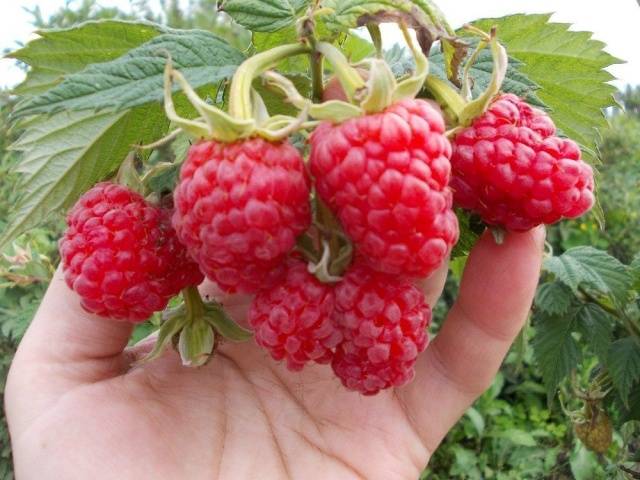
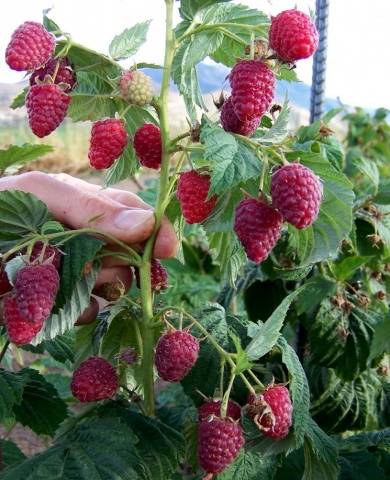
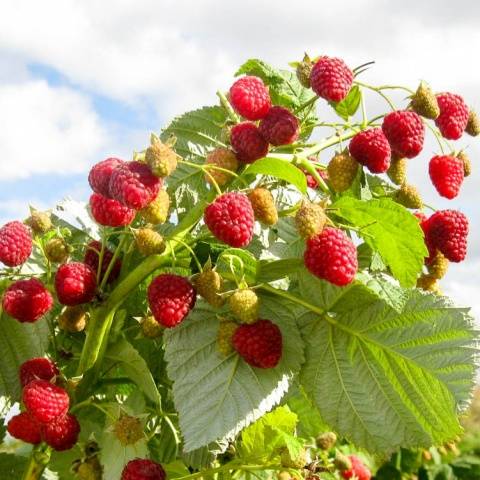
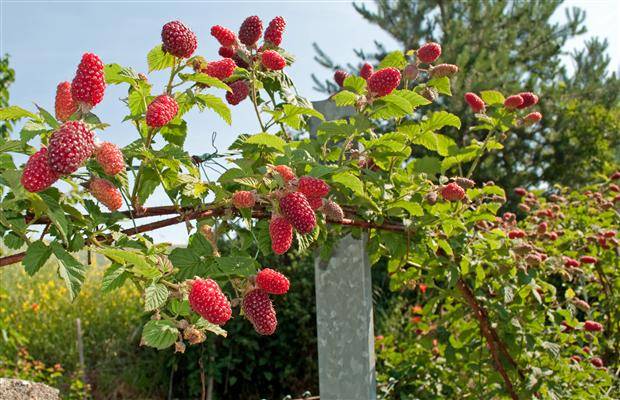

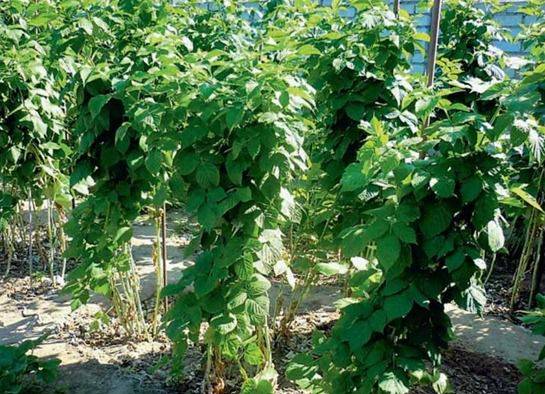
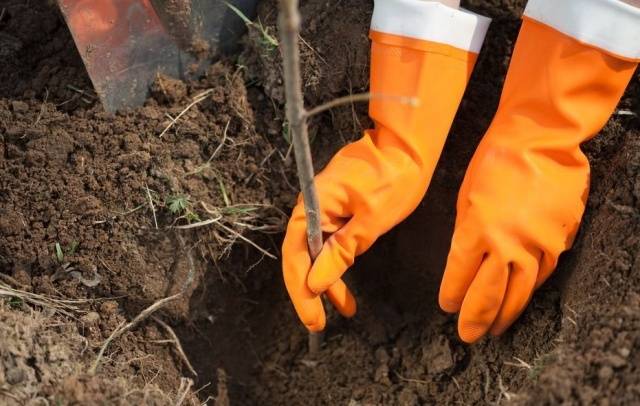
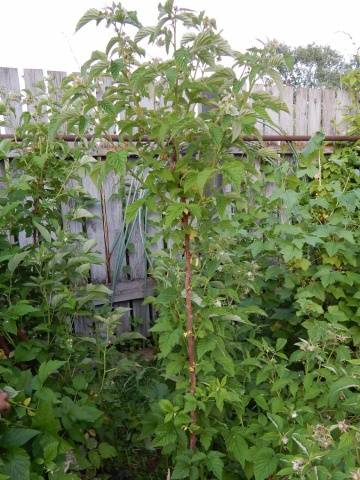


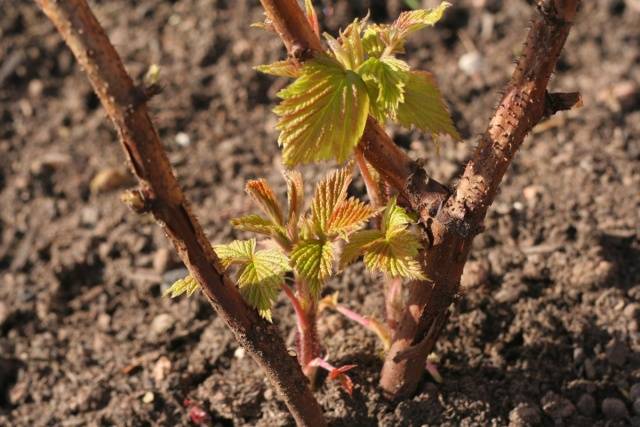
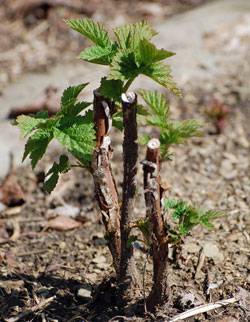

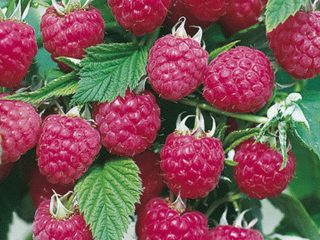
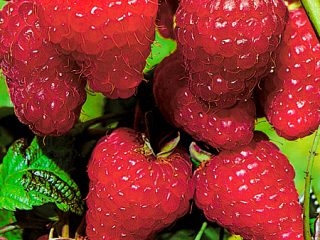

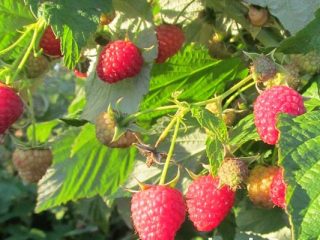




What kind of raspberry tree is better to plant in the Ivanovo region.